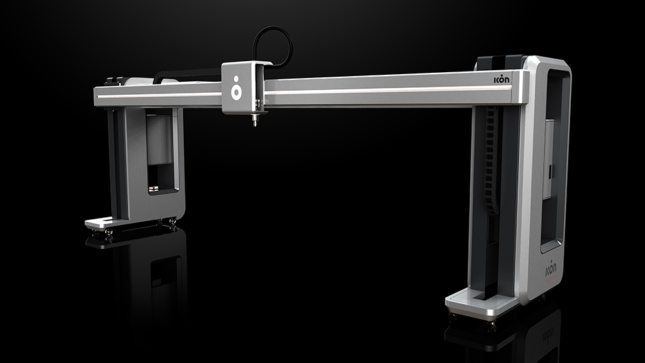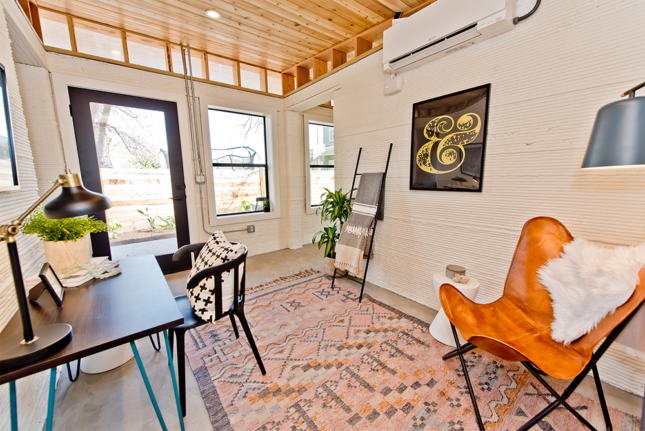“What if you could download and print a house for half the cost?” reads the lede for the Vulcan II, a 3D printer with a name suited for sci-fi space exploration, on the website of Austin-based company ICON. Now the company has put this claim to the test, building what it says is the first permitted 3D-printed home in the United States, unveiled during SXSW.
Using its original Vulcan gantry-style 3D printer, the firm collaborated with global housing nonprofit New Story to build a 650-square-foot home, which features separate bedroom, living, bathroom, and kitchen areas. The home, called the Chicon House, was printed in under 24 hours and while this test cost around $10,000, the firm estimates that future single-story homes, which could be as large as 2,000 square feet, could be printed for thousands less, around $4,000–$6,500. According to New Story CEO Brett Hagler, there is a pressing need to “challenge traditional [building] methods” to combat housing insecurity and homelessness. He adds that “linear methods will never reach the over-a-billion people who need safe homes.” ICON hopes to leverage the technology to help combat global housing crises all while being more environmentally friendly, resilient, and affordable.

The printers use a proprietary “Lavacrete” concrete composite, which is made of materials that can be easily sourced locally and has a compressive strength of 6,000 pounds per square inch. The material is designed to withstand extreme weather conditions to minimize the impact of natural disasters, according to the firm. Wood, metal, and other materials can then be added on for windows, roofs, and the like. The printer relies on an “automated material delivery system” aptly called Magma, which blends the Lavacrete with other additives and water stored in built-in reservoirs. The Lavacrete’s composition is custom-tuned to the particular conditions of each location, accounting for temperature, humidity, altitude, and other climatic features.

While 3D printing has been used in a number of architectural experiments over the past few years, it is primarily used as a prefabrication tool, with parts printed offsite to be assembled later. ICON argues that printing a whole home at once with a gantry printer is faster and more reliable. Printing the whole home reportedly provides a continuous thermal envelope, high thermal mass, and extremely little waste. The printers, which are transported in a custom trailer, are designed to work in areas where there is limited access to water, electricity, and the infrastructure necessary for traditional construction techniques—although, at least currently, it seems that some more standard construction is needed to finish off the 3D printed walls and turn them into a home.
The Vulcan II is operated by a tablet, has remote monitoring technology, and built-in lighting for building overnight. A specialized software suite helps convert CAD drawings into printable forms.
ICON has also begun licensing its tech to others. Austin-based developer Cielo Property Group plans to start production of affordable housing in Austin this year using the Vulcan II, The Wall Street Journal reported.